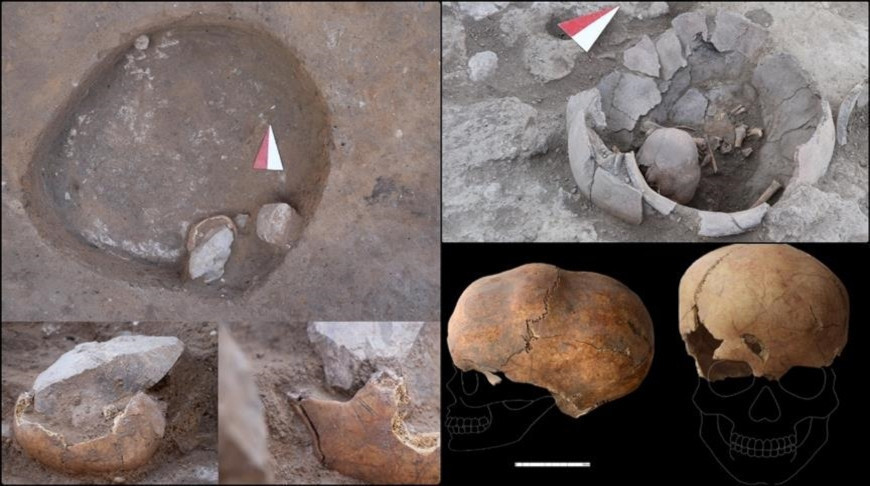
KAHRAMANMARAS, 2 October (BelTA - Anadolu) - A skull believed to be
6,000 years old has been unearthed during an excavation in Yassihoyuk,
Kahramanmaras in Türkiye's Mediterranean region.
Excavation work continues at the mound in the Tanir neighborhood, led by archaeologist Elif Basturk from Ahi Evran University in Kirsehir, with the support of Türkiye's Culture and Tourism Ministry.
Dig leader Basturk told Anadolu that Yassihoyuk has always been a significant area due to its location.
Basturk mentioned that the most exciting findings have been uncovered in the prehistoric layers of the mound.
"We discovered prehistoric layers in a completely unexpected spot, just below the Late Iron Age structures, on a relatively elevated part of the mound. The large structures behind us were built here in terrace form during the Late Iron Age, and they stripped away all the underlying layers up to 4000 BC," she said.
Nine graves were identified, revealing significant findings, including a deliberately shaped skull, she added.
"This was revealed inside a pottery grave. The skeleton belonged to a child, approximately 10-12 years old, and we believe this individual was selected and considered special," she pointed out.
She added: "The grave structure was different from the others, and it was more richly adorned with bead and bone jewelry, standing out as a unique find. This was likely an application intended to mark a special individual's place in society, distinguishing them from others."
Necklace with 820 beads
Basturk mentioned that they found a necklace made of 820 beads in another scattered grave, dated back to 4000 BC, belonging to an infant.
She added that beneath the layers from 4000 BC, they began uncovering Late Neolithic structures from 6000 BC.
In this layer, they discovered a skull buried under the floor of a house, likely connected to an ancestor cult.
Basturk noted that they observed cuts and scraping marks on the skull, likely caused by a sharp tool during the skin removal process.
She stated: "There are different types of such practices, but the data we have is not yet sufficient for further detailed analysis. We continue to find significant discoveries from each period at Yassihoyuk, demonstrating its importance due to its geographical location."
Excavation work continues at the mound in the Tanir neighborhood, led by archaeologist Elif Basturk from Ahi Evran University in Kirsehir, with the support of Türkiye's Culture and Tourism Ministry.
Dig leader Basturk told Anadolu that Yassihoyuk has always been a significant area due to its location.
Basturk mentioned that the most exciting findings have been uncovered in the prehistoric layers of the mound.
"We discovered prehistoric layers in a completely unexpected spot, just below the Late Iron Age structures, on a relatively elevated part of the mound. The large structures behind us were built here in terrace form during the Late Iron Age, and they stripped away all the underlying layers up to 4000 BC," she said.
Nine graves were identified, revealing significant findings, including a deliberately shaped skull, she added.
"This was revealed inside a pottery grave. The skeleton belonged to a child, approximately 10-12 years old, and we believe this individual was selected and considered special," she pointed out.
She added: "The grave structure was different from the others, and it was more richly adorned with bead and bone jewelry, standing out as a unique find. This was likely an application intended to mark a special individual's place in society, distinguishing them from others."
Necklace with 820 beads
Basturk mentioned that they found a necklace made of 820 beads in another scattered grave, dated back to 4000 BC, belonging to an infant.
She added that beneath the layers from 4000 BC, they began uncovering Late Neolithic structures from 6000 BC.
In this layer, they discovered a skull buried under the floor of a house, likely connected to an ancestor cult.
Basturk noted that they observed cuts and scraping marks on the skull, likely caused by a sharp tool during the skin removal process.
She stated: "There are different types of such practices, but the data we have is not yet sufficient for further detailed analysis. We continue to find significant discoveries from each period at Yassihoyuk, demonstrating its importance due to its geographical location."













